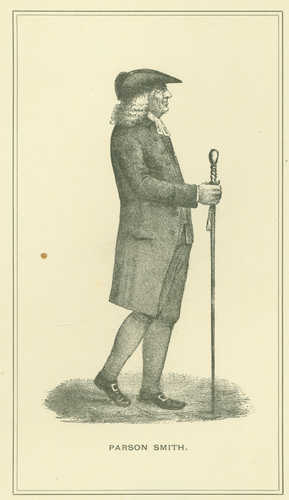Keywords: Longfellow Family
Item 15485
Alice Longfellow, age 9, ca. 1860
Contributed by: NPS, Longfellow House-Washington's Headquarters National Historic Site Date: circa 1860 Location: Boston, MA; Cambridge, MA Media: Photographic print
Item 15892
Charles Appleton Longfellow in formal Japanese attire, 1872
Contributed by: NPS, Longfellow House-Washington's Headquarters National Historic Site Date: circa 1872 Location: Japan Media: Albumen print
Item 61414
37 Longfellow Street, Portland, 1924
Owner in 1924: Charles Sumner Cook Use: Dwelling - Single family
Item 61653
145 Longfellow Street, Portland, 1924
Owner in 1924: Alice E. Locke Use: Dwelling - Single family
Exhibit
Drawing Together: Art of the Longfellows
Henry Wadsworth Longfellow is best know as a poet, but he also was accomplished in drawing and music. He shared his love of drawing with most of his siblings. They all shared the frequent activity of drawing and painting with their children. The extended family included many professional as well as amateur artists, and several architects.
Exhibit
Longfellow: The Man Who Invented America
Henry Wadsworth Longfellow was a man and a poet of New England conscience. He was influenced by his ancestry and his Portland boyhood home and experience.
Site Page
NPS, Longfellow House-Washington's Headquarters Historic Site
View collections, facts, and contact information for this Contributing Partner.
Site Page
Historic Clothing Collection - Outerwear 1800-1830
"… full headed sleeves set very high at the back; a Longfellow family spencer or short jacket; a mid-calf length brownish green wadded cloak, pink…"
Story
Reverend Thomas Smith of First Parish Portland
by Kristina Minister, Ph.D.
Pastor, Physician, Real Estate Speculator, and Agent for Wabanaki Genocide
Story
Monument Square 1967
by C. Michael Lewis
The background story and research behind a commissioned painting of Monument Square.
Lesson Plan
Portland History: "My Lost Youth" - Longfellow's Portland, Then and Now
Grade Level: 6-8, 9-12
Content Area: English Language Arts, Social Studies
Henry Wadsworth Longfellow loved his boyhood home of Portland, Maine. Born on Fore Street, the family moved to his maternal grandparents' home on Congress Street when Henry was eight months old. While he would go on to Bowdoin College and travel extensively abroad, ultimately living most of his adult years in Cambridge, Massachusetts, he never forgot his beloved Portland.
Years after his childhood, in 1855, he wrote "My Lost Youth" about his undiminished love for and memories of growing up in Portland. This exhibit, using the poem as its focus, will present the Portland of Longfellow's boyhood. In many cases the old photos will be followed by contemporary images of what that site looked like 2004.
Following the exhibit of 68 slides are five suggested lessons that can be adapted for any grade level, 3–12.
Lesson Plan
Grade Level: 9-12
Content Area: English Language Arts, Social Studies
Most if not all of us have or will need to work in the American marketplace for at least six decades of our lives. There's a saying that I remember a superintendent telling a group of graduating high-school seniors: remember, when you are on your deathbed, you will not be saying that you wish you had spent more time "at the office." But Americans do spend a lot more time working each year than nearly any other people on the planet. By the end of our careers, many of us will have spent more time with our co-workers than with our families.
Already in the 21st century, much has been written about the "Wal-Martization" of the American workplace, about how, despite rocketing profits, corporations such as Wal-Mart overwork and underpay their employees, how workers' wages have remained stagnant since the 1970s, while the costs of college education and health insurance have risen out of reach for many citizens. It's become a cliché to say that the gap between the "haves" and the "have nots" is widening to an alarming degree. In his book Wealth and Democracy, Kevin Phillips says we are dangerously close to becoming a plutocracy in which one dollar equals one vote.
Such clashes between employers and employees, and between our rhetoric of equality of opportunity and the reality of our working lives, are not new in America. With the onset of the industrial revolution in the first half of the nineteenth century, many workers were displaced from their traditional means of employment, as the country shifted from a farm-based, agrarian economy toward an urban, manufacturing-centered one. In cities such as New York, groups of "workingmen" (early manifestations of unions) protested, sometimes violently, unsatisfactory labor conditions. Labor unions remain a controversial political presence in America today.
Longfellow and Whitman both wrote with sympathy about the American worker, although their respective portraits are strikingly different, and worth juxtaposing. Longfellow's poem "The Village Blacksmith" is one of his most famous and beloved visions: in this poem, one blacksmith epitomizes characteristics and values which many of Longfellow's readers, then and now, revere as "American" traits. Whitman's canto (a section of a long poem) 15 from "Song of Myself," however, presents many different "identities" of the American worker, representing the entire social spectrum, from the crew of a fish smack to the president (I must add that Whitman's entire "Song of Myself" is actually 52 cantos in length).
I do not pretend to offer these single texts as all-encompassing of the respective poets' ideas about workers, but these poems offer a starting place for comparison and contrast. We know that Longfellow was the most popular American poet of the nineteenth century, just as we know that Whitman came to be one of the most controversial. Read more widely in the work of both poets and decide for yourselves which poet speaks to you more meaningfully and why.

















